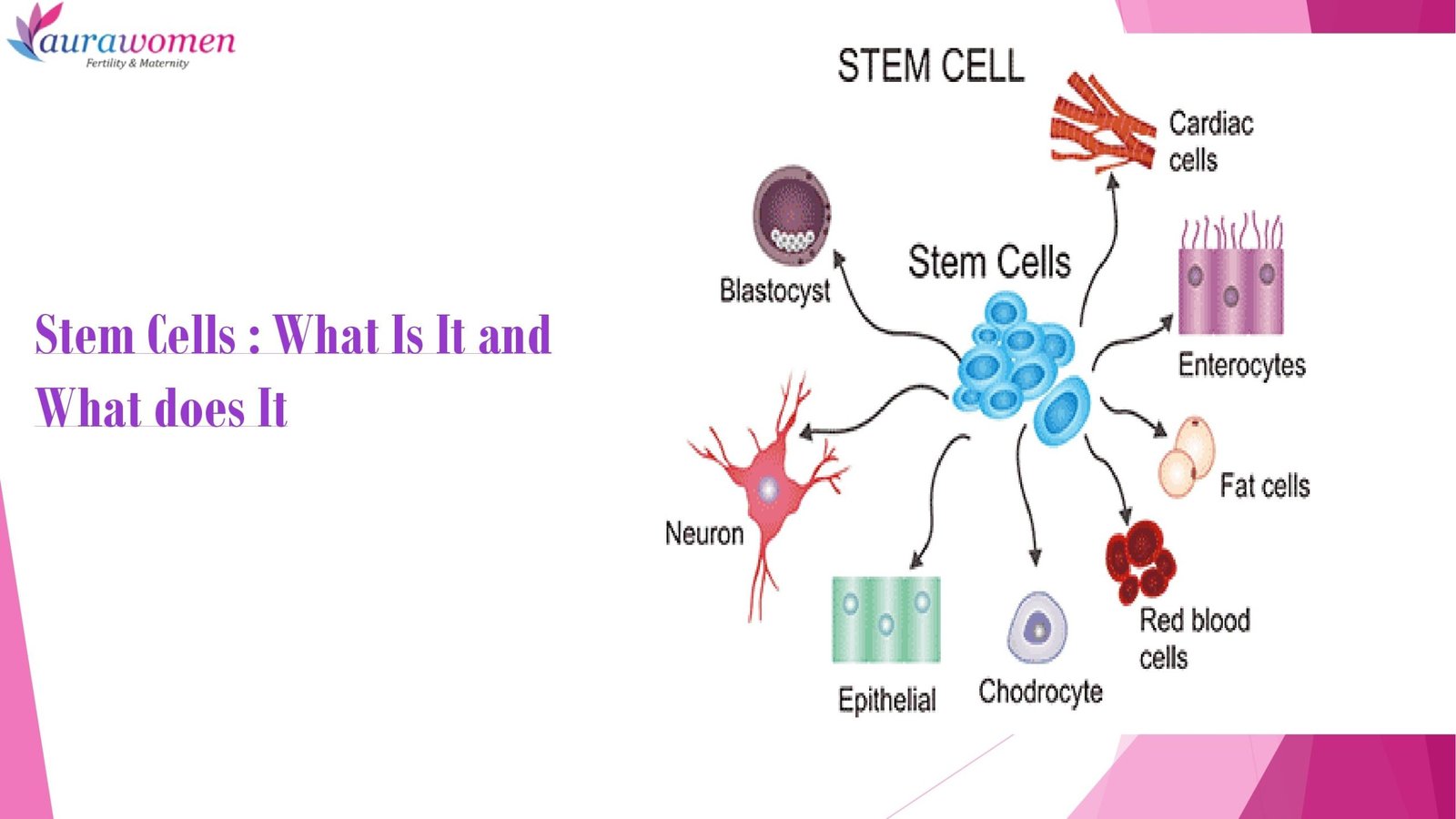
24 Jan Stem Cells: What Is It and What does It
Stem cells, the unsung heroes of modern medicine, hold an incredible promise for revolutionizing healthcare and advancing our understanding of the human body. From their unique properties to groundbreaking applications, let’s delve into the captivating world of stem cells.
Introduction
In the vast landscape of biological wonders, stem cells stand out as versatile and powerful entities. These undifferentiated cells have the remarkable ability to transform into various cell types, making them a focal point in medical research and treatment.
Types of Stem Cells

Embryonic Stem Cells
Embryonic stem cells, derived from embryos, are pluripotent, and capable of becoming any cell type in the human body. Their versatility sparks interest in regenerative medicine and therapeutic applications.
Adult or Somatic Stem Cells
Found in various tissues, adult stem cells contribute to tissue repair and regeneration. While less versatile than embryonic stem cells, they play a crucial role in maintaining the body’s normal functions.
Induced Pluripotent Stem Cells (iPSCs)
Reprogramming adult cells to exhibit embryonic stem cell-like properties, induced pluripotent stem cells offer a non-controversial alternative for research and medical applications.
Properties of Stem Cells
Self-Renewal: Stem cells can divide and produce identical daughter cells, maintaining an undifferentiated state.
Differentiation: The process through which stem cells transform into specialized cell types, fulfilling specific functions.
Plasticity: Stem cells can adapt and change their functions, enhancing their therapeutic potential.
Applications in Medicine
The transformative nature of stem cells finds practical applications in regenerative medicine, disease treatment, and organ transplantation. The ability to repair and replace damaged tissues opens new avenues for addressing previously incurable conditions.
Stem Cell Research Breakthroughs
Recent breakthroughs in stem cell research have paved the way for innovative treatments and therapies. From spinal cord injuries to degenerative diseases, scientists continue to push the boundaries of what’s possible, offering hope to millions.
Controversies and Ethical Concerns
While the potential benefits of stem cell research are vast, ethical debates persist, particularly regarding the use of embryonic stem cells. Striking a balance between scientific progress and ethical considerations remains a challenge.
Future Prospects
As technology advances, so does our understanding of stem cells. The future holds exciting possibilities, with emerging technologies and discoveries on the horizon, promising even more significant breakthroughs.
Stem Cells in Cosmetic Industry
Beyond medicine, the cosmetic industry embraces stem cells for anti-aging treatments and skincare. The regenerative properties of stem cells offer new avenues for maintaining youthful and healthy skin.
Challenges in Stem Cell Research
Navigating scientific challenges and regulatory hurdles is crucial for the continued success of stem cell research. Addressing these challenges ensures the responsible and ethical progression of the field.
Public Perception and Awareness
Educating the public about stem cells is essential in dispelling myths and fostering a more informed society. Increasing awareness encourages support for research and a more nuanced understanding of its potential.
Global Initiatives and Collaborations
Stem cell research is a global effort, with scientists and institutions collaborating across borders to accelerate advancements. Shared knowledge and resources contribute to the collective progress of the field.
Educational Outreach
Public understanding of stem cells is vital, and educational outreach initiatives play a pivotal role. Informing the public about the science behind stem cells promotes responsible discourse and informed decision-making.
Stem Cells and Cancer
Understanding the link between stem cells and cancer provides valuable insights into potential therapeutic interventions. Targeting cancer stem cells holds promise for more effective and targeted cancer treatments.
Financial Investments in Stem Cell Research
The economic landscape plays a role in the advancement of stem cell research. Significant financial investments drive projects forward, fostering an environment conducive to innovation and discovery.
Conclusion
In conclusion, the journey into the world of stem cells is a testament to human curiosity and the relentless pursuit of knowledge. As we unlock the potential within these remarkable cells, the impact on medicine, cosmetics, and beyond is undeniable.
5 Unique FAQs
- Q: Can stem cells be used to treat any disease?
- A: While stem cells show promise in treating various diseases, not all conditions can be addressed using this approach. Research is ongoing to explore new applications.
- Q: What ethical considerations surround stem cell research?
- A: The use of embryonic stem cells raises ethical concerns due to the source of these cells. Scientists and ethicists work together to establish guidelines for responsible research.
- Q: How do induced pluripotent stem cells differ from embryonic stem cells?
- A: Induced pluripotent stem cells are created by reprogramming adult cells, avoiding the ethical issues associated with embryonic stem cells. They share similar properties but originate from different sources.
- Q: Are there any risks associated with stem cell treatments?
- A: Like any medical intervention, stem cell treatments carry risks. Research aims to better understand potential complications and ensure the safety of these therapies.
- Q: How can the public contribute to stem cell research?
- A: Supporting ethical research, staying informed, and participating in educational initiatives are ways the public can contribute to the progress of stem cell research.




No Comments